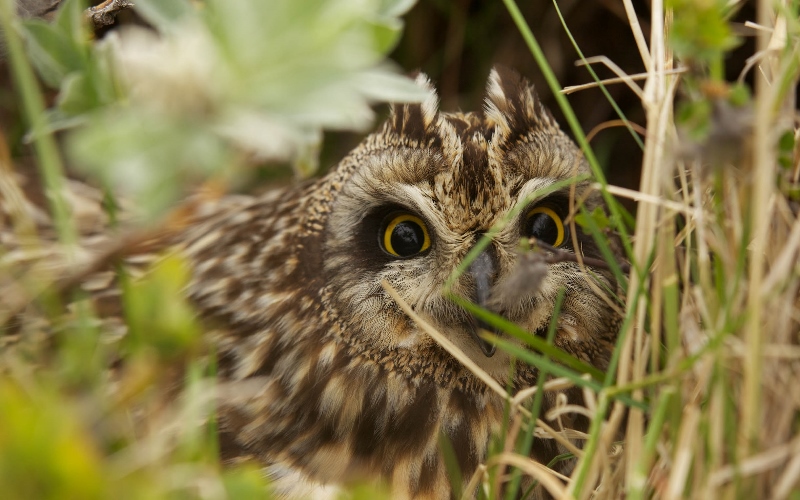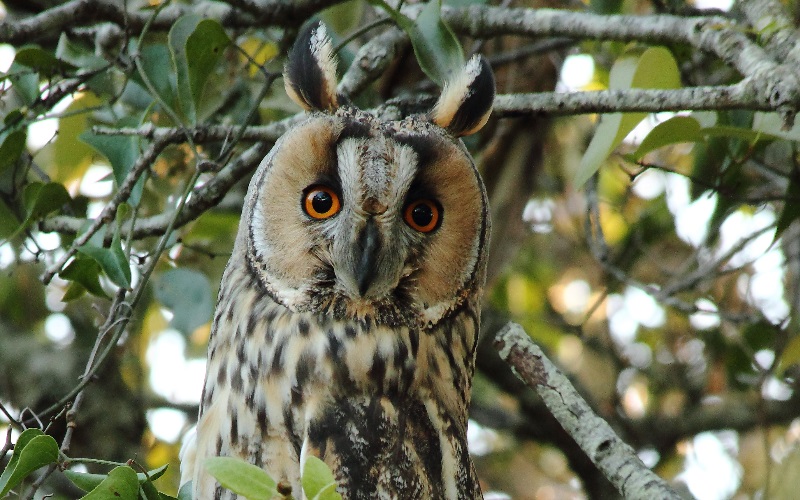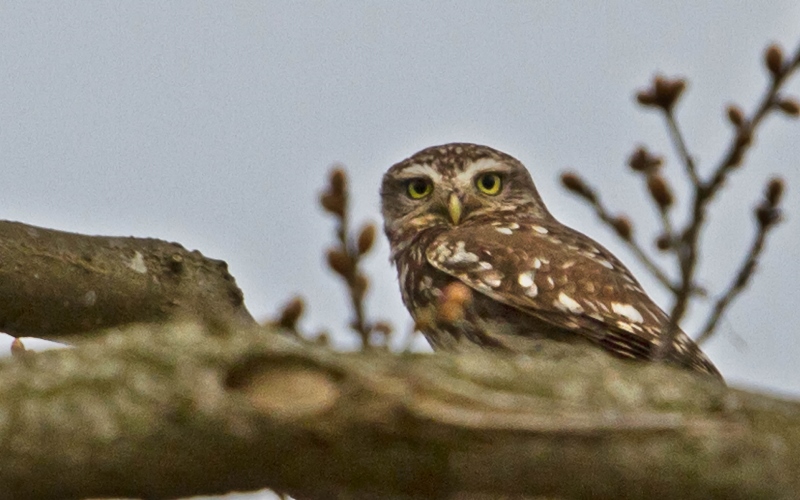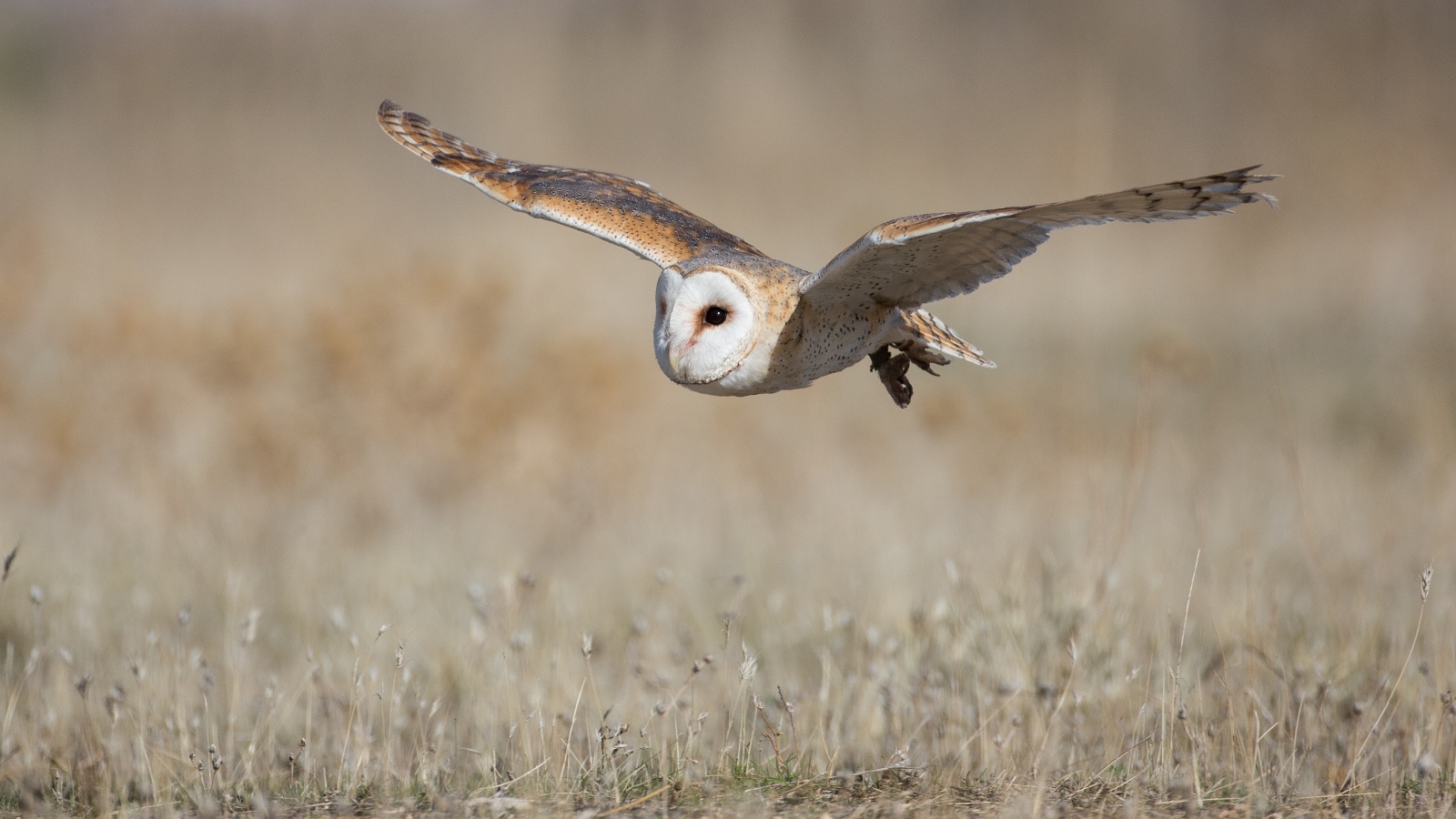From the Barn Owl to the Little Owl: How to contribute to the conservation of nocturnal birds of prey
Gardens for wildlife
Of the 250 nocturnal birds of prey known throughout the world, only seven can be found in Portugal. These include two that are only here part of the year: the Short-eared owl (Asio flammeus), which winters in Portugal, and the Eurasian scops owl (Otus scops), which arrives in spring to breed. The remaining five species – the Barn owl (Tyto alba), the Tawny owl (Strix aluco), the Long-eared owl (Asio otus), the Little owl (Athene noctua) and the Eurasian eagle-owl (Bubo bubo) – remain in the country throughout the year.
All seven species belong to the order Strigiformes, explains João Eduardo Rabaça, who spoke about what each one of us can do to contribute to the conservation of this group during a visit to the Gulbenkian Gardens in January.
Because they need open areas to find sufficient food, many of these birds are more often associated with the rural environment. But they can sometimes be found on the outskirts of towns and cities or, in the case of the Barn owl and Tawny owl, even in city centres. ‘The number of birds that penetrate and nest in urban areas is remarkable,’ says João Eduardo Rabaça, who recalls that juvenile Tawny owls were found on Avenida da Liberdade in Lisbon in 2006.
But that situation sadly no longer applies, and nocturnal birds of prey can no longer be found in the centre of Lisbon. Indeed, it is believed that more than half of these species have lost ground in Portugal, at least since the end of 2009.
According to the latest report by the Working Group on Nocturnal Birds (GTAN), which brings together various specialist researchers, the most worrying situations are those of the Eurasian scops owl and the Little owl, with the populations of these two species estimated to have undergone ‘a strongly negative trend.’ marked by a ‘sharp decline.’ According to the same document, published in December 2022, the Barn owl and the Long-eared owl also require attention, as ‘they are undergoing a moderate decline.’


With more than half of Portugal’s nocturnal birds of prey facing this negative outlook, the most important thing to do is to obtain more data about the state of this group. ‘We need a more accurate picture of what’s going on,’ says João Eduardo Rabaça. ‘The most popular and useful thing for citizens who want to do something to help is to get involved in the Noctua Portugal census,” he stresses. It is this census of nocturnal birds, organised every year by the GTAN and the Portuguese Society for the Study of Birds (SPEA), that provides Portuguese researchers with information on the population trends of these species.
These bird counts are carried out by volunteers at the end of the day or during the night and anyone can take part, stresses this professor from the University of Évora. The organisers of the census help with whatever is necessary and supply recordings of the birds’ vocalisations. Indeed, the most common practice of Noctua Portugal is to identify each bird based on the characteristic sound it makes.
The Barn owl, for example, has a shrill scream that is very easy to identify; the Eurasian scops owl has a monosyllabic song, reminiscent of that of the Common midwife toad; the Tawny owl emits the typical ‘uhuuuu’ traditionally associated with owls; and the Short-eared owl’s cry resembles a muffled laugh.
LISTEN
Barn owl, Eurasian scops owl, Tawny owl, Short-eared owl
Taking place every year between December and mid-June, all participation in the Noctua Portugal census is important, but there is a greater need for volunteers in the interior of the country.
The greater the number of participants and the more widespread their presence, the greater the quantity and quality of data that will be obtained and the more influence it will be possible to have on political decision-makers to commit themselves to the conservation of these birds. ‘It’s important to know what species are here, where they are, in what numbers and their movements. Any information from a sighting is important, even if it is a bird that has been hit by a car. People should send that information to GTAN,’ urges the researcher. People can also join the eBird portal, he adds.

Fantastic birds
So different from diurnal birds, nocturnal birds of prey have aroused human curiosity for centuries. But what distinguishes the birds of the order Strigiformes from other birds? For starters, they have their eyes at the front of the head, which helps them see in depth. Owls are the only birds like this.
And since the dominant sense of this group is hearing, there is another characteristic that can be observed in virtually all nocturnal birds of prey: ‘The ears are not on the same level but are actually slightly misaligned,’ says João Eduardo Rabaça. ‘When they hear a sound, their brains manage to triangulate and detect the exact origin of the sound.’
Most owls are only active at night, though this is not always the case. Both the Little owl and the Short-eared owl, for example, are also active during the day.
The white figure and silent flight of the Barn owl have fed nocturnal myths and fears throughout history, notes the researcher. Many scientists have studied the ability of this robust bird to fly in a practically silent way and take its prey by surprise. This silent flight is only possible due to the size of their wings, which allow them to glide almost without movement. It is also due to ‘an absolutely extraordinary technical detail’: the special serrations on the outer edge of their wing feathers, which ‘cut the air and significantly attenuate any sound being produced due to friction.’


Nesting boxes
These birds make an important contribution to the balance of ecosystems and are known allies of farmers. A single Barn owl, for example, ‘can eat around 1000 rodents a year, which is a great help as a plague of rodents can have a big impact on crops.’ The Little owl, which feeds mainly on insects and some micro-mammals, is another species known for its role in pest control.
Nocturnal birds of prey are also seen by scientists as sentinels of the environment, since ‘the agricultural environments with which many are associated are among the most contaminated by chemical products.’ The increased use of pesticides and other materials is reflected, for example, in the thickness of their eggshells, making them more fragile.
Besides taking part in the Noctua Portugal census, it is possible to help these birds by installing nesting boxes suitable for species such as the Tawny owl, Barn owl and Little owl. Even so, ‘it is always necessary to evaluate the conditions of each specific place and the possibility of the boxes being occupied by exotic species, a situation that should be avoided,’ stresses the university lecturer.
Gardens for wildlife
Throughout the year, the Gulbenkian Garden is promoting a series of visits focused on how to make our gardens, parks and land, both inside and outside cities, more welcoming for wildlife – fundamental for life on Earth! Wilder magazine follows these visits and publishes articles on each of the different topis covered in partnership with the Gulbenkian Foundation.

